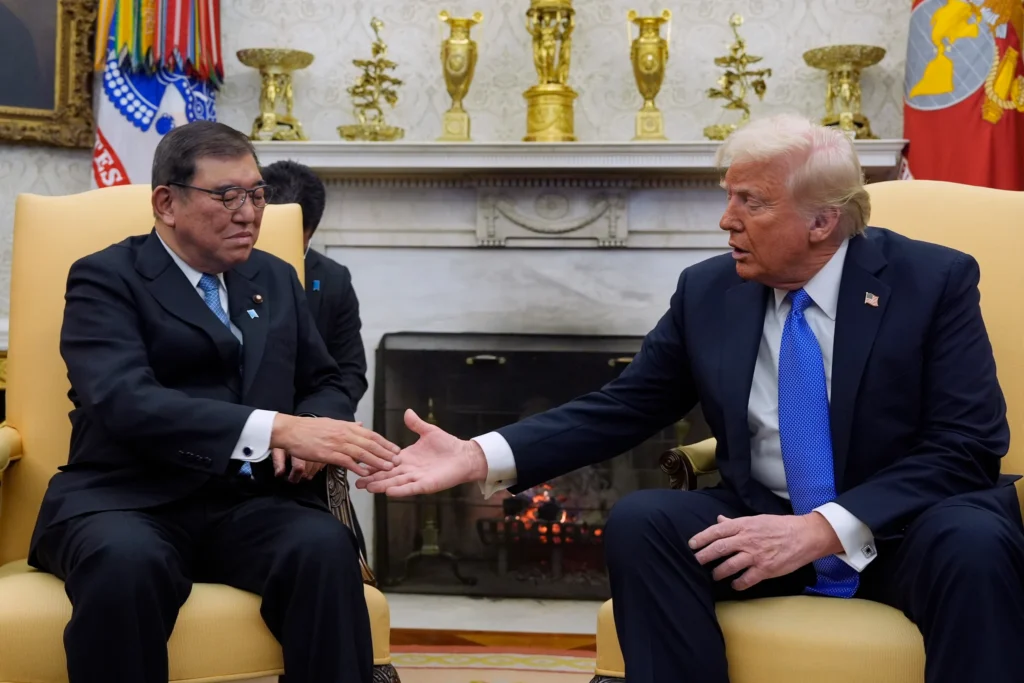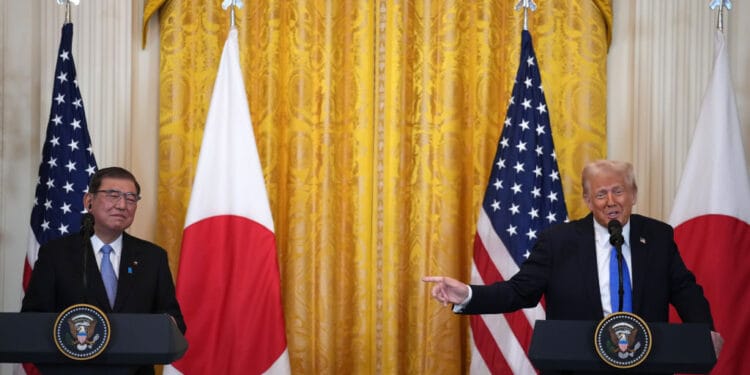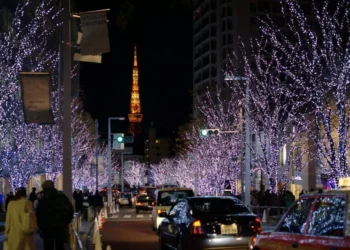No products in the cart.
Prime Minister Ishiba and President Trump Reaffirm U.S.-Japan Alliance in Landmark White House Meeting
On February 7, 2025, Japanese Prime Minister Ishiba met with U.S. President Donald Trump at the White House, marking a pivotal moment in U.S.-Japan relations. This meeting was highly anticipated, especially given the evolving geopolitical landscape in the Asia-Pacific region.
Setting the Stage
Prior to the summit, both nations emphasized the importance of reaffirming their longstanding alliance. According to reports, the leaders planned to discuss strengthening cooperation in security and economic sectors.
Economic Discussions
A significant focus of the meeting was on economic collaboration. Prime Minister Ishiba highlighted Japan’s substantial investments in the United States, noting that Japan has been the top foreign investor in the U.S. for five consecutive years, creating thousands of American jobs. He announced plans to increase Japanese investment in the U.S. to $1 trillion, with particular emphasis on the automotive sector and the import of U.S. liquefied natural gas (LNG). This move aligns with existing trends, as LNG imports from the U.S. to Japan rose by 15% in the previous year.
President Trump expressed appreciation for these initiatives, recognizing Japan’s contributions to the U.S. economy. He acknowledged the role of Japanese investments in bolstering American industries and job creation. Notably, the topic of auto tariffs, a potential point of contention, was not a primary focus during the discussions.
Security and Defense
On the security front, both leaders reaffirmed their commitment to the U.S.-Japan alliance. They discussed shared concerns regarding regional stability, particularly in light of recent developments involving North Korea. North Korean leader Kim Jong Un had recently criticized the enhanced security partnership between the U.S., South Korea, and Japan, vowing to bolster his nuclear program in response.
Prime Minister Ishiba emphasized Japan’s role in regional security and its plans to bolster defense capabilities. He assured that any increase in Japan’s defense budget would be pursued with public support, aiming to address threats posed by neighboring countries while maintaining transparency with the Japanese populace.

Personal Dynamics and Diplomacy
Leading up to the meeting, there was considerable speculation about the personal rapport between the two leaders. Prime Minister Ishiba, known for his reserved demeanor, was perceived by some as potentially mismatched with President Trump’s more assertive style. To prepare, Ishiba engaged in extensive briefings with senior administration officials and sought advice from his predecessor, Fumio Kishida. He also received insights from the widow of former Prime Minister Shinzo Abe, who had established a close relationship with President Trump during his first term.
This preparation appeared to pay off. After the meeting, Prime Minister Ishiba remarked on President Trump’s sincerity and strong will, contrasting with his previous perceptions based on media portrayals. Observers noted that Ishiba’s approach, which included highlighting Japan’s economic contributions and avoiding confrontational topics, resonated well with President Trump
Avoiding Potential Pitfalls
While the meeting was largely positive, both leaders were cautious to sidestep potential areas of disagreement. For instance, President Trump’s proposal of a U.S. takeover of the Gaza Strip had sparked international criticism, and Japan reiterated its support for a two-state solution, maintaining its longstanding position on the matter. Additionally, Japan remained watchful of the U.S.-China trade tensions, aiming to avoid entanglement in the dispute while balancing its significant economic ties with both nations.
Domestic Implications for Ishiba
Domestically, the successful meeting provided a boost for Prime Minister Ishiba, whose minority government had been grappling with political challenges after losing its ruling majority in the previous general elections. Demonstrating effective diplomacy on the international stage bolstered his standing within his party and among the Japanese public.
Conclusion
The inaugural meeting between Prime Minister Shigeru Ishiba and President Donald Trump was marked by mutual affirmations of the U.S.-Japan alliance and commitments to deepen economic and security cooperation. Through careful preparation and a focus on shared interests, both leaders navigated potential challenges, setting a positive tone for future bilateral engagements.










